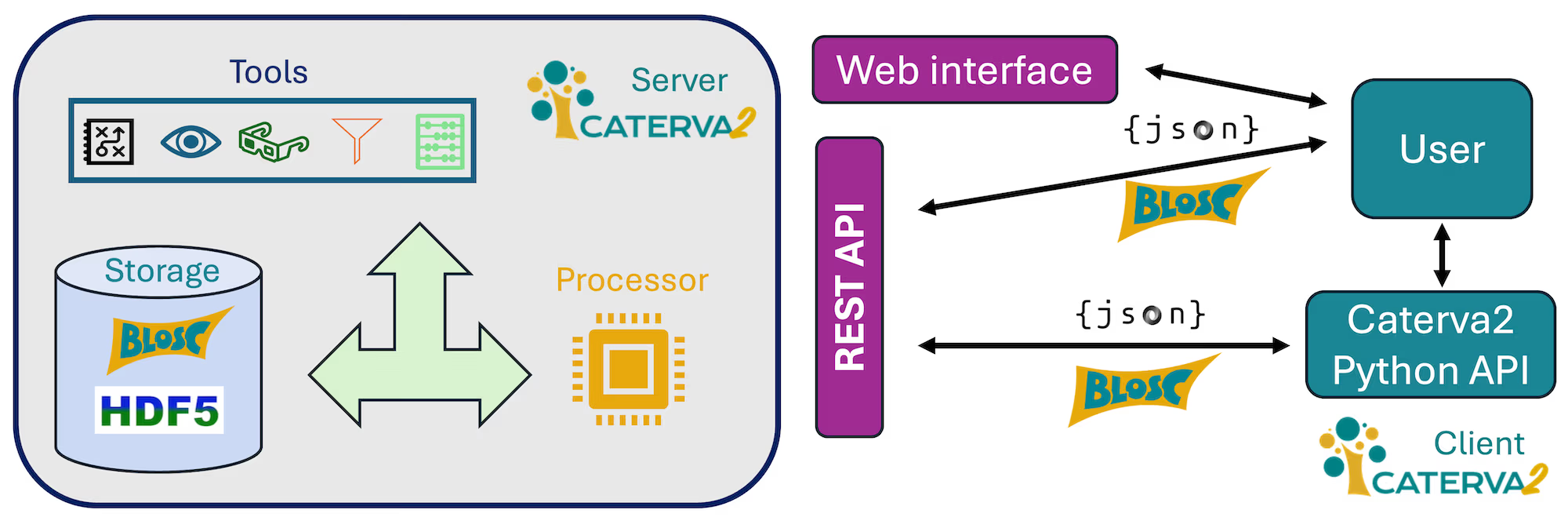
Your Gateway to Blosc2/HDF5 Repositories
Caterva2 redefines how you interact with your Blosc2 and HDF5 datasets. It offers a powerful, flexible service designed to provide seamless and secure access to your data, whether you're working solo, collaborating with a team, or sharing information publicly. You can access your data through a Pythonic, NumPy-like API, a REST API or via a user-friendly web interface, making it easy to navigate, visualize, and manipulate your datasets.

Documentation and Tutorials
We provide extensive documentation and tutorials to help you get started with Caterva2. Whether you're a developer looking to integrate Caterva2 into your applications, or a data scientist wanting to leverage its capabilities for your datasets, our resources will guide you through the process.

How It Works
Watch this video to learn more about Caterva2, its main functionalities, and how it can streamline your workflows:
Key Features
- 🚀 Blazing Fast Performance: Caterva2 runs on top of the compression + computation engine Blosc2 for lightning-speed data compression, decompression, and server-side computations. Your data is always primed and ready for action.
- 🔑 Ease of Use: Effortlessly weave Caterva2 into your current workflows using its intuitive, Pythonic, NumPy-like API. Interacting with your data has never felt more natural.
- 📂 Advanced Data Management: Expertly organize your data with robust support for intricate directory structures, and send and recieve data at unprecedented speeds owing to a compression-first framework.
- 🖥️ Attractive Visualisation: Caterva2's web interface is crafted for clarity and efficient data access for visualisation, enabling you to engage with your data without friction. Say goodbye to convoluted setups and demanding learning curves.
Caterva2 is Free Software
Caterva2 is not just powerful, it's also Free Software under the AGPL. This means you get full transparency, the freedom to customize, and the assurance of a community-driven platform – all while fostering innovation and collaboration.
Find the source code on GitHub and join the community of developers and users who are shaping the future of data management.
Expert Support When You Need It
Caterva2 is engineered for seamless integration into your existing workflows and applications, supporting popular data formats like Blosc2 and HDF5. This makes it a versatile solution for diverse applications in scientific computing, data analysis, and machine learning.
At ironArray, we're dedicated to your success with Caterva2. Whether you need assistance installing Caterva2 on-premises, deploying it in the cloud, or integrating it into your custom applications and workflows, our team is here to provide comprehensive support and consulting services. Think of us as your partners in unlocking the full potential of Caterva2 for your data management challenges.